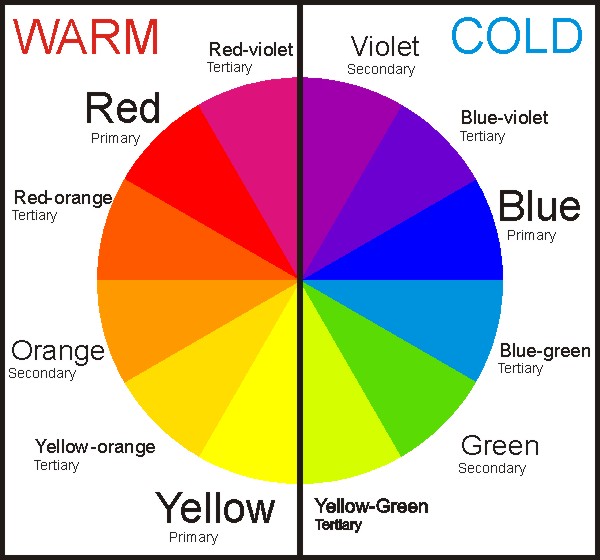One of the advantages of displaying colours as in the Colour Wheel is that we can establish relations among colours. For instance, we can divide the circle in two to get what we call WARM & COLD colours:

In this new assignment you will have to create an image based in NATURE and colour it making a distinction between these two groups of colours. So if you chose to colour the main shape with COLD colours, the background will have to be filled with WARM colours and vice versa.
Besides you will have to create a geometric pattern (squares, rectangles, triangles, circumferences, etc.) under the shapes you create for your design to display the different colours. Take a look to these images made by Loretta Grayson:
Those geometric patterns reminds me of a famous painter named Paul Klee (he died in 1940) who was a master applying colour and rhythm to his paintings :
And finally, some assignments made for ESO students:
∼
Don´t forget to copy the assessment criteria at the back side of the sheet of paper:
1st.- Name, last name and group.
2nd.- Draw a frame (Horizontal Layout).
3rd.- Get homogeneus colours.
4th.- Accuracy at edges.
5th.- Complexity of the drawing (geometric pattern).
6th.- Use exclusively WARM or COLD colours for the MAIN SHAPE or the BACKGROUND.
7th.- Use a wide range of colours.
8th.- Neatness.
9th.- Self Assessment.


